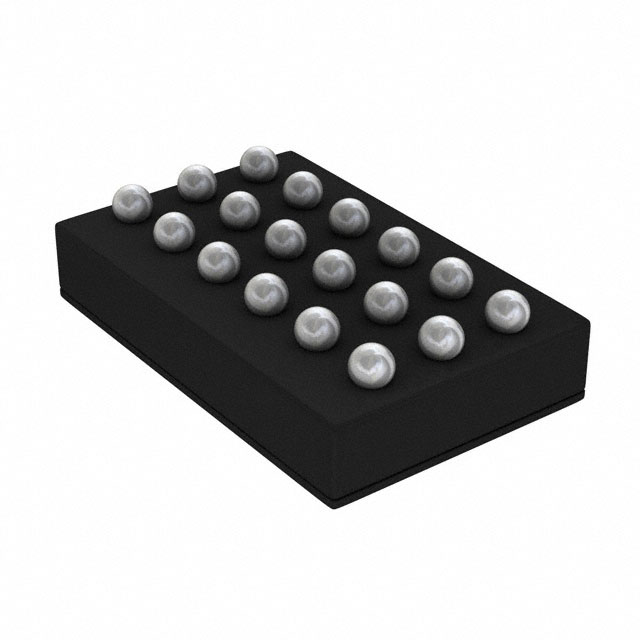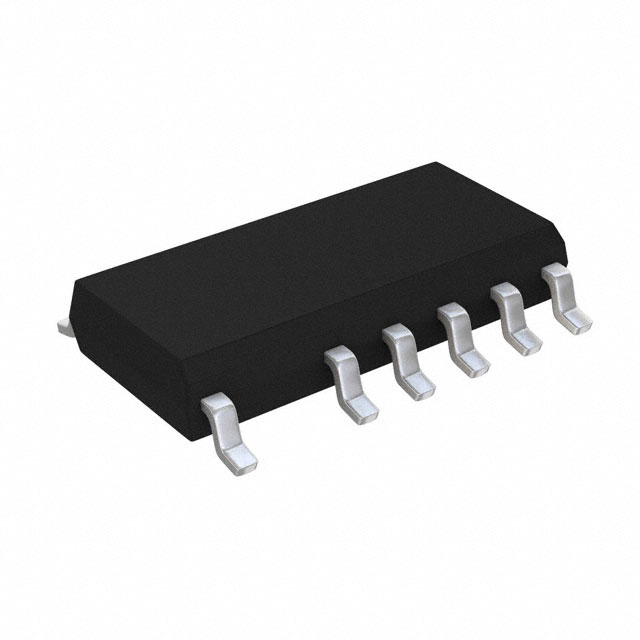Ⅰ. PMIC - LED Drivers
Ⅱ. Physical Characteristics of PMIC - LED Drivers
Ⅲ. Electrical Characteristics of PMIC - LED Drivers
A PMIC (Power Management Integrated Circuit) LED driver is a specialized component integrated into PMICs that provides efficient and precise power management for LED (Light-Emitting Diode) lighting applications. LED drivers within PMICs offer several advantages, including compact size, high efficiency, and simplified design. Let's explore the introduction to PMIC LED drivers in more detail:

1.Purpose: PMIC LED drivers are designed to control the power supply and current flowing through LEDs. LEDs require specific voltage and current levels to operate optimally and achieve the desired brightness and color. LED drivers within PMICs ensure that the LEDs receive the correct power supply and maintain consistent current levels, enabling reliable and efficient LED lighting.
2.Current Regulation: LED drivers within PMICs are responsible for regulating the current flowing through the LEDs. LEDs are current-driven devices, meaning their brightness is directly proportional to the current passing through them. LED drivers monitor and control the current to maintain consistent brightness levels and prevent overcurrent conditions that could damage the LEDs.
3.Voltage Conversion: PMIC LED drivers often include voltage conversion capabilities to efficiently convert the input voltage to the appropriate voltage level required by the LEDs. This conversion is achieved through techniques such as switching regulators, which maximize power efficiency and minimize power losses.
4.Dimming Control: Many PMIC LED drivers offer dimming control functionality, allowing for dynamic adjustment of LED brightness. Dimming can be achieved through various methods, including pulse width modulation (PWM) or analog dimming. Dimming control enables energy savings, customization of lighting effects, and adaptation to different ambient lighting conditions.
5.Protection Features: PMIC LED drivers typically incorporate protection features to safeguard the LEDs and the driver circuitry. These features may include overvoltage protection, overcurrent protection, thermal shutdown, and LED fault detection. Protection mechanisms help prevent damage to the LEDs and ensure safe operation, especially in demanding or fluctuating operating conditions.
6.Compact Integration: PMIC LED drivers are integrated into PMICs, which consolidate multiple power management functions into a single chip. This integration reduces the component count, saves board space, and simplifies system design. It is particularly advantageous in space-constrained applications, such as portable devices and compact lighting systems.
PMIC LED drivers find widespread use in various applications, including display backlighting, automotive lighting, general lighting, and handheld devices. They offer efficient power management, precise current control, and flexibility in controlling LED brightness.
When selecting a PMIC with integrated LED drivers, it is essential to consider the specific requirements of the LED lighting application, such as the desired current range, voltage range, dimming capabilities, and any specific features required for optimal performance. Consulting the datasheet and technical documentation provided by the PMIC manufacturer is crucial to understanding the detailed specifications and compatibility with the targeted LED lighting system.
Physical Characteristics of PMIC - LED Drivers
The physical characteristics of PMIC (Power Management Integrated Circuit) LED drivers can vary depending on the specific implementation and manufacturer. However, here are some general considerations regarding the physical characteristics of PMIC LED drivers:
1.Package Type: PMIC LED drivers are typically packaged as part of the PMIC itself. The package type can vary, including options such as quad flat no-leads (QFN), ball grid array (BGA), small outline integrated circuit (SOIC), or flip-chip packages. The package type determines the external dimensions, pin count, and thermal characteristics of the component.
2.Size: The size of PMIC LED drivers can vary based on the complexity and functionality of the integrated circuits. Miniaturization is a common trend, and these components are designed to be compact to fit within the overall PMIC package. The size of the package contributes to the space efficiency and overall form factor of the PMIC.
3.Pin Count: PMIC LED drivers have a certain number of pins that provide electrical connections for power inputs and outputs, control signals, and communication interfaces. The pin count depends on the specific functionality and requirements of the component. It is important to consider the pin count when designing the PCB layout and ensuring compatibility with the PMIC and the overall system.
4.Thermal Considerations: PMIC LED drivers, like other power management components, generate heat during operation. Effective thermal management is crucial to ensure reliable performance and prevent overheating. Thermal considerations may involve incorporating thermal pads or exposed heat sinks on the package, using additional thermal solutions like heat sinks or thermal vias on the PCB, or adhering to specific thermal guidelines provided by the manufacturer.
5.Mounting: PMIC LED drivers are typically mounted on the PCB using surface-mount technology (SMT). They are soldered onto the PCB using reflow soldering techniques. The specific mounting method depends on the package type and manufacturer recommendations. Proper mounting and soldering techniques are essential to ensure reliable electrical connections and proper functioning of the components.
6.Markings and Labels: PMIC LED drivers may have markings and labels on the package, providing information such as the manufacturer's logo, part number, date codes, and pin identification. These markings aid in identification, differentiation, and proper usage of the components.
It's important to note that the specific physical characteristics of PMIC LED drivers can vary based on the manufacturer, product family, and application requirements. When selecting a PMIC with integrated LED drivers, it is crucial to consult the datasheet or technical documentation provided by the manufacturer for detailed specifications and information on the physical characteristics of these components within a specific PMIC.

Electrical Characteristics of PMIC - LED Drivers
The electrical characteristics of PMIC (Power Management Integrated Circuit) LED drivers define their functionality and performance in powering and controlling LED (Light-Emitting Diode) lighting applications. While the exact electrical specifications can vary depending on the specific implementation and manufacturer, here are some general electrical characteristics to consider:
1.Input Voltage Range: PMIC LED drivers have a specified input voltage range within which they can operate effectively. This range indicates the acceptable voltage levels at the input side of the LED driver. It is important to ensure that the input voltage falls within the specified range to ensure proper operation and avoid potential damage to the LED driver.
2.Output Current Range: LED drivers within PMICs regulate the current flowing through the LEDs. They typically have a specified output current range that indicates the minimum and maximum current levels they can provide to the LEDs. It is crucial to select an LED driver with an output current range that matches the requirements of the LEDs being powered.
3.Efficiency: Efficiency is an important electrical characteristic of PMIC LED drivers. It represents how effectively the LED driver converts the input power to the desired output power, minimizing power losses. Higher efficiency means less wasted energy and improved overall system efficiency. It is desirable to select LED drivers with high efficiency to maximize energy savings and minimize heat generation.
4.Dimming Control: Many PMIC LED drivers offer dimming control capabilities, allowing for dynamic adjustment of LED brightness. The electrical characteristics related to dimming control include the dimming voltage range, dimming interface type (such as PWM or analog), and dimming resolution. These characteristics determine the flexibility and precision of dimming control for the LEDs.
5.Protection Features: PMIC LED drivers often incorporate protection features to ensure the safety and longevity of the LEDs and the driver circuitry. These features may include overvoltage protection, overcurrent protection, thermal shutdown, LED fault detection, and short-circuit protection. These protection mechanisms help prevent damage to the LEDs and ensure safe operation in various operating conditions.
6.Control and Communication Interfaces: PMIC LED drivers may provide control and communication interfaces for configuration and monitoring purposes. These interfaces can include I2C (Inter-Integrated Circuit), SPI (Serial Peripheral Interface), or other proprietary protocols. They allow for device-specific configuration, status monitoring, and control of LED brightness and other parameters.
It's important to note that the specific electrical characteristics of PMIC LED drivers can vary based on the manufacturer, product family, and application requirements. When selecting a PMIC with integrated LED drivers, it is crucial to consult the datasheet or technical documentation provided by the manufacturer for detailed electrical specifications and ensure compatibility with the system's LED lighting requirements.



